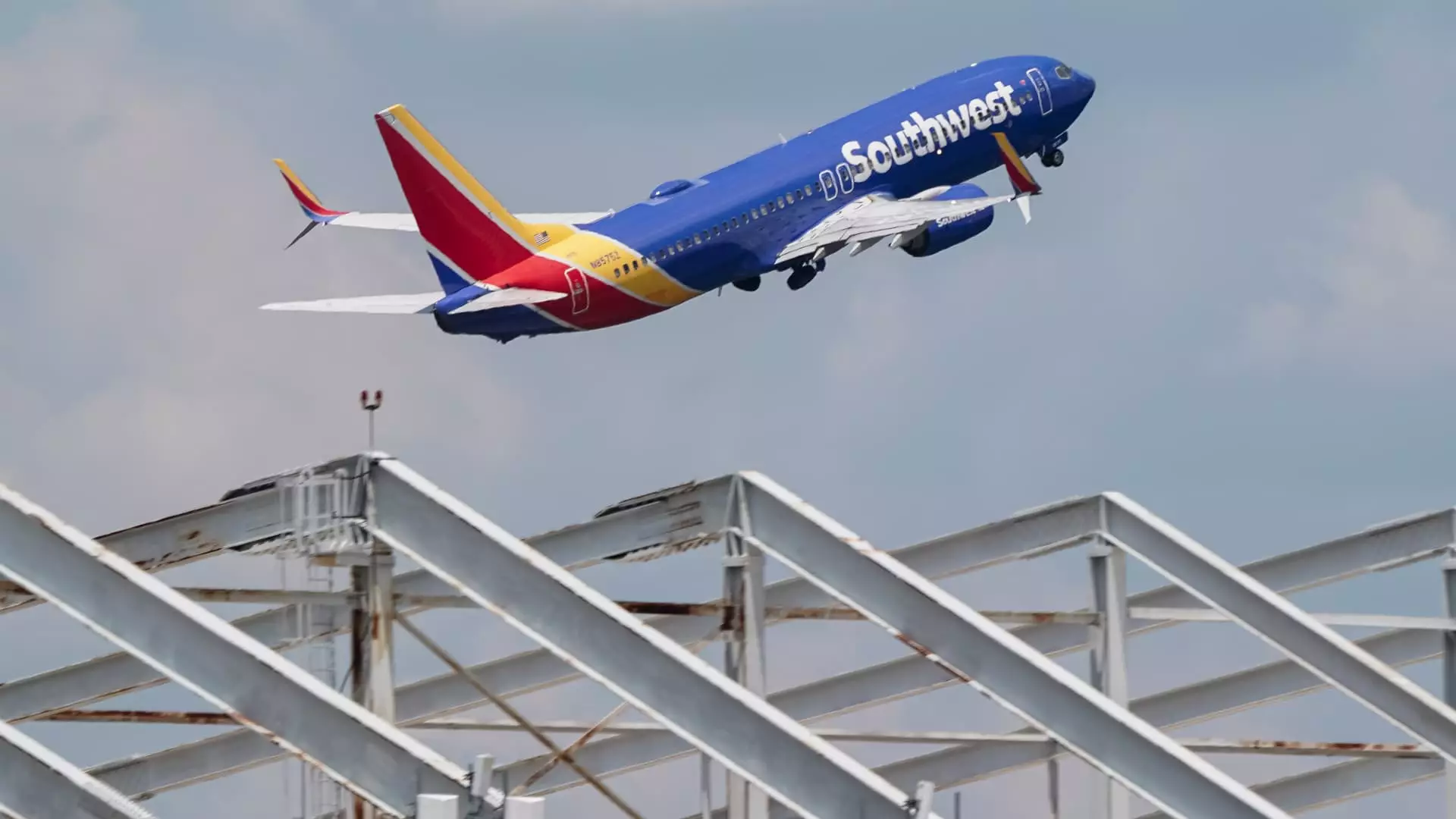Southwest Airlines recently reported its results for the third quarter, revealing a notable decline in profits compared to the previous year. Nevertheless, these results exceeded analysts’ expectations, indicating a degree of resilience within the company amid external pressures. The airline’s adjusted earnings per share of 15 cents significantly outperformed the consensus forecast of zero cents, demonstrating that its financial strategies may be beginning to pay off despite challenges.
In a competitive industry where profit margins are thin, Southwest’s revenue of $6.87 billion marked a year-over-year increase of over 5%, again surpassing the anticipated figure of $6.74 billion. However, the airline also confronted a stark reality, with its net income plummeting 65% year-over-year, which highlights the difficulties it faces even as demand for travel remains robust.
A key aspect of Southwest’s recent journey is its relationship with Elliott Investment Management, an activist investor that has focused on maximizing shareholder value. The two entities recently struck a deal that avoids a potentially disruptive proxy fight, allowing six Elliott candidates to join the board of directors. This partnership could facilitate a dynamic shift in Southwest’s governance, aiming to bolster profit margins and ensure a more agile corporate strategy moving forward.
CEO Bob Jordan is set to retain his position, which may provide stability during this transformative phase. This arrangement signals a willingness to adapt and collaborate, potentially fostering an environment where innovative ideas can flourish and the company’s profitability can be enhanced.
Looking ahead, Southwest anticipates an increase in unit revenue ranging from 3.5% to 5.5% for the fourth quarter, even as it plans to reduce its capacity by approximately 4%. Such strategic capacity management is intended not only to optimize operations but also to keep ticket prices stable in a fluctuating market. However, the airline cautioned that costs, excluding fuel expenses, could rise by as much as 13%, indicating ongoing challenges related to operational efficiency and inflation.
The airline’s commitment to improving its financial outlook aligns with a broader industry trend. Other airlines have also reported solid travel demand as they focus on streamlining operations by reducing unprofitable routes. This collective effort across the industry could lead to a healthier financial ecosystem for all players involved.
In an ambitious move reflective of evolving customer preferences and market trends, Southwest is set to transition from its decades-long open seating model to a system that incorporates seat reservations. This significant policy change will introduce charged seating options and enhanced legroom features, a first in the airline’s history. Such adaptations signify a broader shift within the airline toward a more competitive pricing strategy as it seeks to enhance passenger experience and generate additional revenue.
While Southwest Airlines grapples with a challenging financial landscape, its proactive strategies for revenue enhancement, collaborations with activist investors, and innovative operational changes suggest a determination to navigate the shifting waters of the airline industry effectively. As it prepares for future growth, the company’s ability to adapt will be crucial in ensuring its sustainability and profitability in the long-run.


Leave a Reply